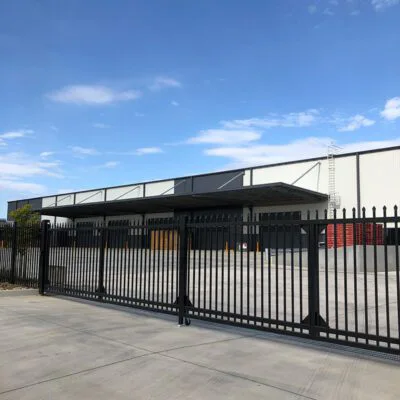
Choosing the best fencing for your home is crucial for security, privacy, and aesthetic appeal. In this comprehensive guide, we will explore various types of residential fencing, their pros and cons, important factors to consider, cost considerations, gate options, professional installation, maintenance tips, and enhancements. By understanding the factors and following local regulations, you can select the perfect fence that enhances security, privacy, and aesthetic appeal for your home.
Wooden fences are one of the most common types of fences, typically consisting of planks, pickets, and beams. A wide variety of wood types are available, including pine, cedar, and redwood, with varying degrees of durability and price. Wooden fences have natural grain and color, blending harmoniously with their surroundings and creating a warm and comfortable atmosphere. They can be customized to your preferences, including height, style, and color. They can be painted, stained, or left in their natural color. Compared to some other fencing materials, wood is relatively inexpensive, especially for common wood species like pine. If a wooden fence becomes damaged, it can be repaired or replaced relatively easily.
However, wood is susceptible to rot, insects, and the effects of weather and sun, requiring regular maintenance, including painting, staining, and preservative treatment. Compared to some other fencing materials, wooden fences have a shorter lifespan, typically around 10 years, depending on the wood type and maintenance.
Vinyl fencing is a type of fencing made of polyvinyl chloride (PVC) that requires no painting, staining, or preservative treatment, only regular cleaning. It’s durable, resistant to corrosion, insect damage, or fading, and has a long service life, typically over 20-30 years. With a smooth surface and a variety of colors to choose from, it can mimic the look of a wood fence. Vinyl fencing is relatively simple to install, saving labor costs. However, compared to wood fencing, vinyl fencing is more expensive. It may expand or deform in high temperatures and become brittle in low temperatures. If a vinyl fence becomes damaged, the entire unit usually needs to be replaced rather than repaired.
Chain link fencing is a mesh fence made of woven wire, typically galvanized or plastic-coated.
Chain link fencing is one of the most economical and affordable fencing options. The galvanized or plastic-coated wire used offers excellent corrosion resistance and a long service life. Furthermore, chain link fencing does not obstruct views, maintaining an open field of vision. Installation is relatively simple, saving labor costs.
However, chain link fencing has a relatively simple appearance and lacks aesthetic appeal. Furthermore, it lacks visual obstruction and provides relatively low privacy.
Steel fencing is made of steel pipes or plates, typically joined by welds or bolts. High-quality galvanized steel is inherently strong and rigid. It’s durable and can withstand strong winds, impacts, and other obstacles.
High-security steel fencing, such as spear-top fencing, is difficult to climb or damage, effectively preventing unauthorized access. Our steel fencing can be customized in a variety of styles and sizes, offering excellent aesthetics. With surface anti-corrosion treatments like powder coating, steel fencing has a long service life, typically 20-30 years or even longer. However, compared to wooden fencing, steel fencing is more expensive, making it more expensive. Furthermore, steel fencing is heavier and more difficult to install.
Aluminum fencing is made of aluminum alloy, typically joined by welding or bolting. Aluminum alloy is rust-resistant and corrosion-resistant. Aluminum fencing is also lightweight and easy to install. Aluminum fencing can be designed in a variety of styles, offering excellent aesthetic appeal. Aluminum fencing itself can be corrosion-resistant without the need for painting, staining, or anti-corrosion treatment. Treatments such as spray coating can extend its service life. Maintenance is low, requiring only regular cleaning. However, aluminum alloy is less strong than steel, making aluminum fencing less impact-resistant.
– Discuss additional factors to consider, such as pet containment, noise reduction, and weather resistance.
– Provide suggestions for suitable fence options based on specific needs.
Choosing the best fencing for your home involves careful consideration of various factors. By understanding the pros and cons of different types of fences, considering your specific needs, and following local regulations, you can select a fence that enhances security, privacy, and aesthetic appeal. Remember to also consider the long-term maintenance and cost considerations of the best fencing project you build.